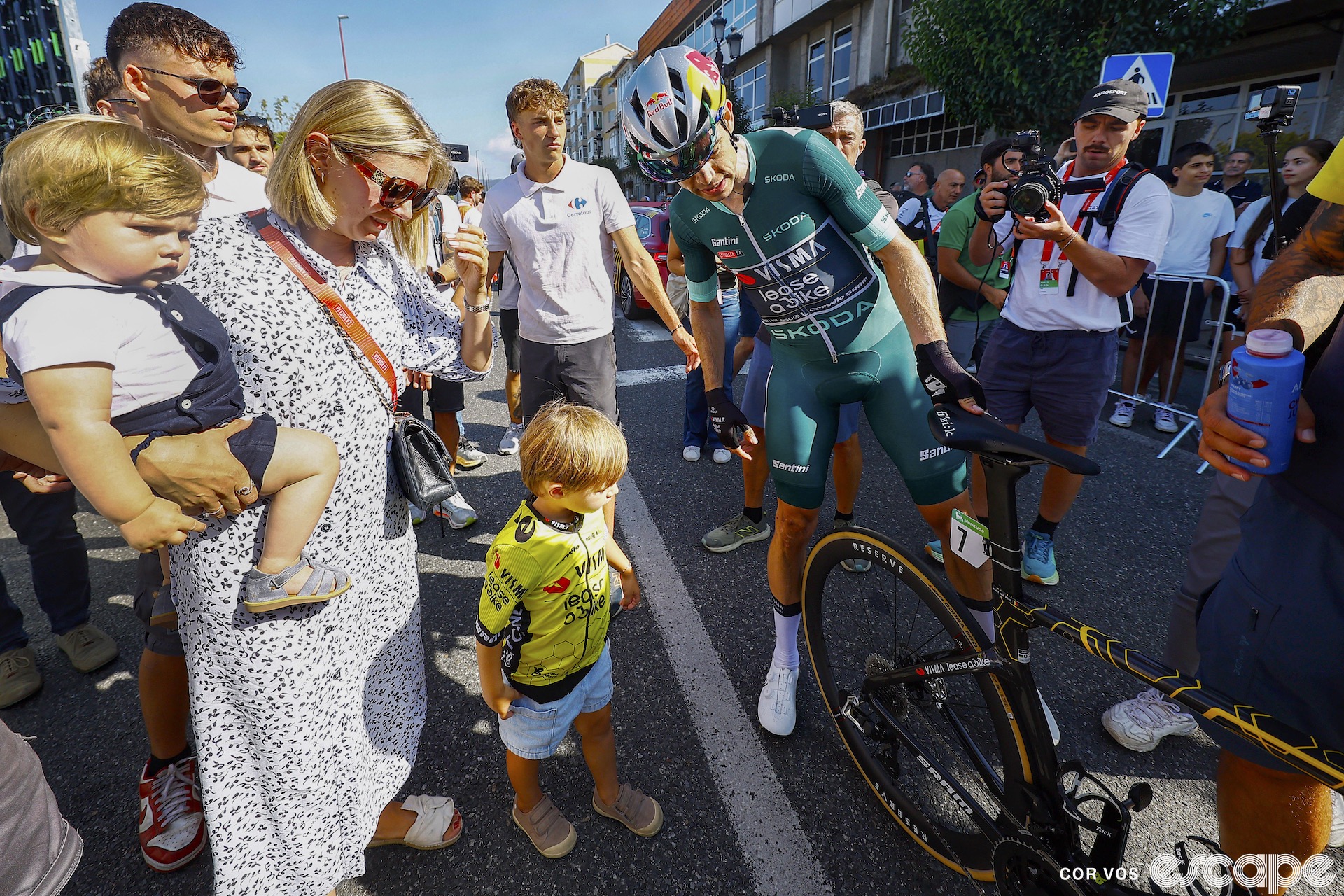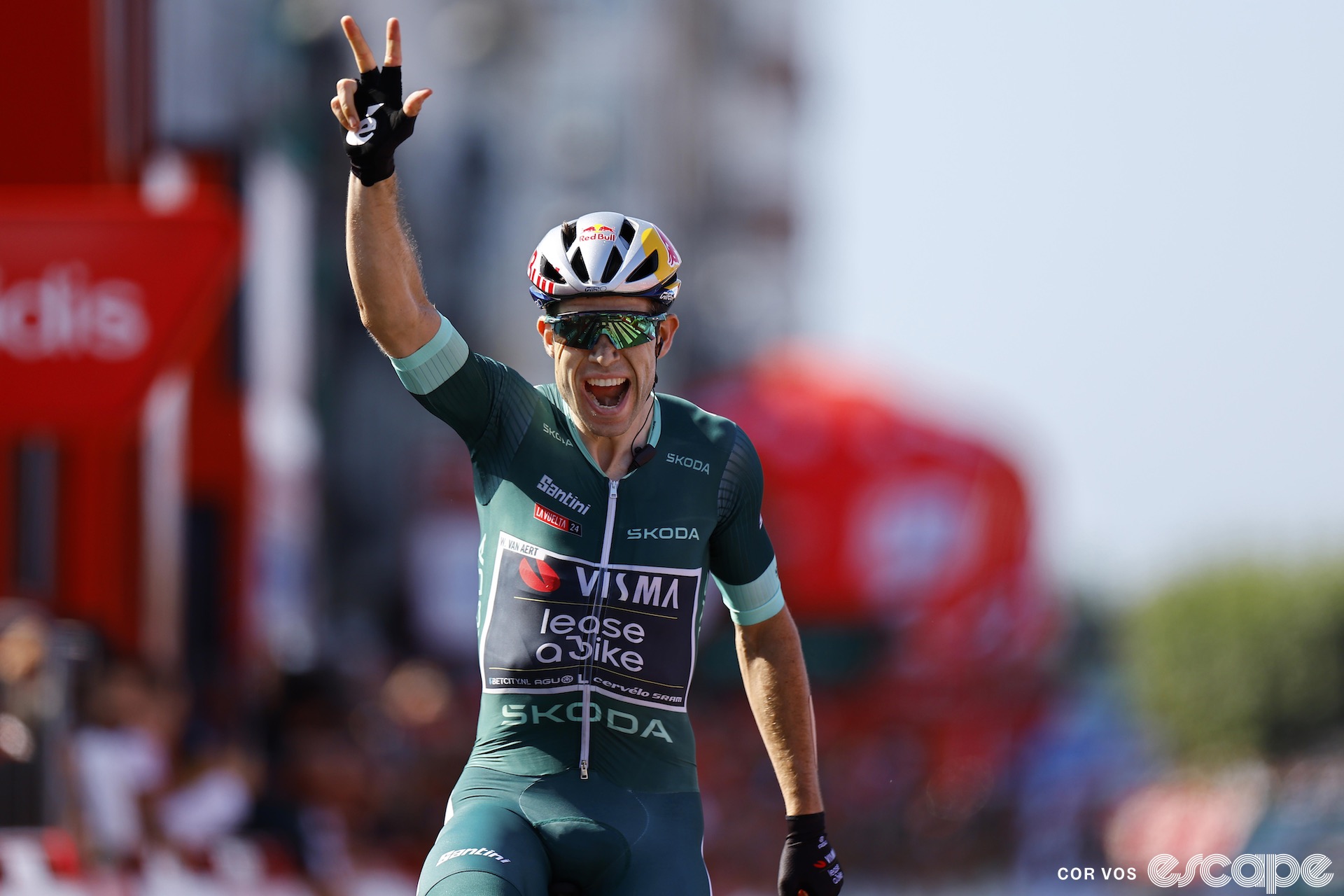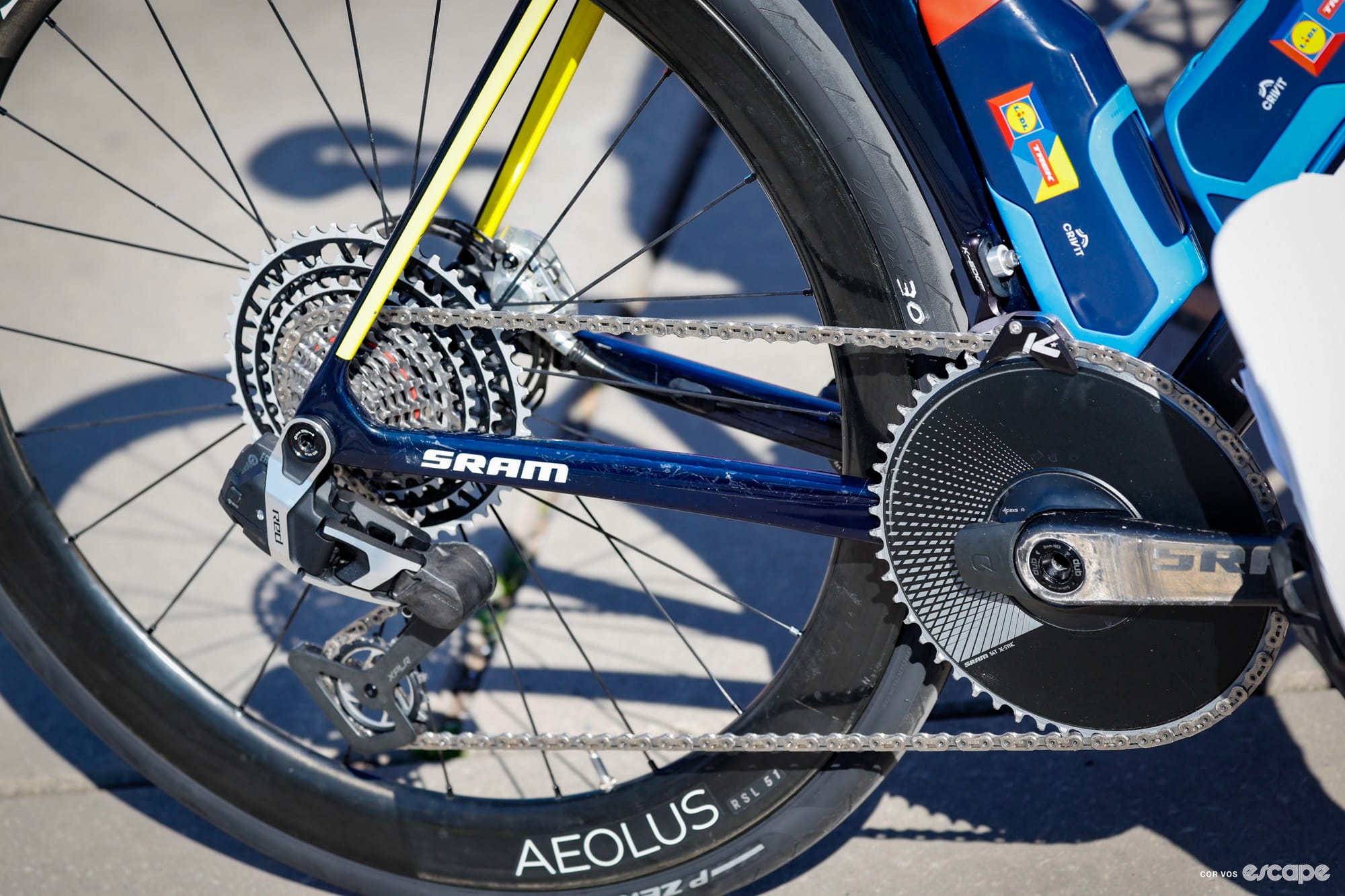Wout van Aert (Visma-Lease a Bike) had never ridden the Vuelta a España prior to the start of this year's race a little over a week ago, but now he has three career stage wins to his name in the Spanish Grand Tour.
The 29-year-old Belgian jumped into the early break on the Vuelta's up-and-down 10th stage, and he and Quentin Pacher (Groupama-FDJ) ultimately left their fellow escapees behind to contest the win. Van Aert then bested the Frenchman convincingly in the two-up sprint beside the ocean in Baiona. Marc Soler (UAE Team Emirates) took third on the stage, 2:01 behind the two leaders.
Content to let the break battle for the stage on the first day of racing after the first rest day, the peloton arrived a little over five minutes down with race leader Ben O'Connor (Decathlon AG2R) and the rest of the top GC contenders safely in the bunch.
[race_result id=23 stage_id=79169 count=10 gc=0 year=2024] [race_result id=23 stage_id=79169 count=10 gc=10 year=2024]How it happened
- As racing resumed after a plane transfer to Galicia in northwestern Spain, stage 10 featured an early second-category climb that seemed a likely place for the breakaway hopefuls to make their move. They did just that, with Van Aert himself instigating a few early attempts before joining Soler and William Junior Lecerf (Soudal-QuickStep) in what would eventually be the move that stuck – although it was touch and go for a while.
- That trio only took about 20 seconds over the climb, and then Pacher and Juri Hollman (Alpecin-Deceuninck) bridged up to make it five out front, though with the bunch still relatively close behind. The lead quintent spent the next 20 minutes holding onto a slim advantage as those in the pack who had missed out attempted to get on terms, but the elastic finally snapped with around 80 km to go. With 70 km to go, the gap was out to four minutes.
- Red Bull did some pace-setting in the pack, assumedly trying to put O'Connor under pressure, but it soon became clear that the break would battle for the stage win. With just over 30 km to go, Van Aert made a surge just before the intermediate sprint, and then he just kept pedaling, suddenly enjoying a gap back to the other breakaway riders other than Pacher, who reacted and bridged up to the Belgian. From there, the new lead duo hardly looked back, collaborating well over the first-category Alto de Mougás.
- Pacher made a short-lived attempt to get clear of Van Aert on the run-in to Baiona, but Van Aert immediately responded to the attack, and the two riders rolled onto the finishing straight together. Pacher hardly contested the sprint in the end, watching as Van Aert powered away to take his third stage win of the Vuelta.

It was really my aim to be in the breakaway but I had a hard time on the first climb and actually I almost gave up. I gave one more try just before the top, but still then for 50 kilometers we really needed to fight to get a gap.
—Wout van Aert after his win
Brief analysis
- Van Aert was the favorite ahead of the stage, whose profile made it ideal for his skillset, but it was tough to predict whether the day might go to the break or the bunch. When Van Aert jumped into the move, he cemented his favorite status even further, with no one else in the group likely to match his speed in the finish.
- Still, there was always the chance that a late attacker might dash Van Aert's hopes of a reduced sprint, and so he took matters into his own hands by pushing clear of the larger group, though it wasn't entirely clear whether that was his intention at first, seeing as it was the intermediate sprint where his surge came. In any case, he got away from Soler and Co. and pressed on with Pacher.
- It was never going to be easy for Pacher to get anything better than a second place on the day, but he at least tried to steal a march on Van Aert – and avoid a sprint he would surely lose – with his move inside the last 2 km. The move hardly troubled Van Aert, and from there, his win was practically assured. Pacher only spent a few moments trying to match his rival in a sprint before sitting up and accepting runner-up honors.
Up next
The climbs of stage 11, which starts and finishes at the Campus Tecnológico Cortizo in Padrón, should favor the Classics types who can handle short punchy efforts. The last ascent of the day, the Puerto Cruxeiras, has an average gradient nearing 9% that will hopefully spur some attacks.
Did we do a good job with this story?






